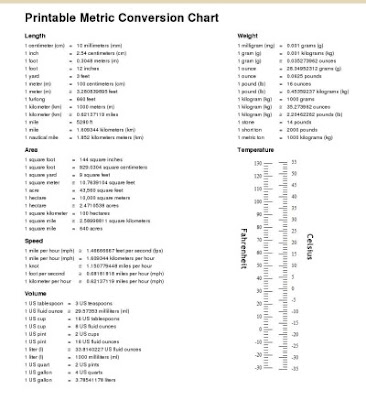Pet peeves with Common Core Standards 1
In general, I really, really like the Common Core Standards for math. There is some emphasis and explicit mentions of mental math skills, there is emphasis on conceptual understanding -- even a mention of the "bar models" (though they were called line diagrams) -- yet fluency of math facts and of the four operations are included as well.
So I'm not really complaining here! But I've found a few little things there, pet peeves of mine, if you allow, that I don't quite follow, so I thought of posting such here and seeing if any of you have some ideas for me.
Here's one for 5th grade.
5.OA
Analyze patterns and relationships.
3. Generate two numerical patterns using two given rules. Identify
apparent relationships between corresponding terms. Form ordered
pairs consisting of corresponding terms from the two patterns, and
graph the ordered pairs on a coordinate plane. For example, given the
rule "Add 3" and the starting number 0, and given the rule "Add 6" and the
starting number 0, generate terms in the resulting sequences, and observe
that the terms in one sequence are twice the corresponding terms in the
other sequence. Explain informally why this is so.
In other words, in the example students would generate two skip-counting sequences:
0, 3, 6, 9, 12, 15, 18, 21, 24, 27, 30, 33, 36
and
0, 6, 12, 18, 24, 30, 36, 42, 48, 54, 60, 66, 72
These are of course very familiar to students from third grade when they learned their multiplication tables.
THEN, we make ordered pairs from these:
(0,0), (3,6), (6,12), (9,18), (12,24), (15,30), (18,36), (21,42), (24,48), (27,54), and so on, and plot them in the coordinate plane.
Then we observe that in each ordered pair the second number is double the first number.
The part I don't get is... NORMALLY, I think, leading into linear functions, we would form ordered pairs using 0, 1, 2, 3, 4, etc. as our x-values and then calculate the y-values using the "pattern" or "rule" of doubling, for example, and get 0, 2, 4, 6, 8, 10, etc. The ordered pairs would be
(0,0), (1,2), (2,4), (3,6), (4,8), (5,10), etc. The ordered pairs could be written in a table as well, and the rule given as y = 2x.
That would also tie in with the work students do with the coordinate graph, because another standard for 5th grade says:
Represent real world and mathematical problems by graphing points
in the first quadrant of the coordinate plane, and interpret coordinate
values of points in the context of the situation.
And I assume we would use simple linear functions as our "mathematical problems" here.
But what do we gain from forming these ordered pairs in this manner, and then noting that there is a doubling taking place? You can notice the doubling without graphing the ordered pairs... and the ordered pairs don't as easily connect with the function y = 2x as if you used counting numbers as your x-coordinates.
Or what if one of the rules is "add 3", starting at 0, and the other is "subtract 5", starting at 100? Then we get ordered pairs
(0,100), (3,95), (6,90), (9,85), (12,80), (15,75), (18,70), (21,65), (24,60), (27,55), and so on. What are we supposed to notice here?
Or what if one of the rules is "add 3", starting at 0, and the other is "multiply by 2", starting at 1? Then we get ordered pairs
(0,1), (3,2), (6,4), (9,8), (12,16), (15,32), (18,64), (21,128), (24,256), (27,512) and so on. What are we supposed to learn here?
Let me know your thoughts!
=========================================
UPDATE:
Thanks for those who responded. I'm going to make a video lesson about this exact topic today, and this is what I've chosen to do. I basically have space and time for about 4 examples.
I was going to start with the two rules of "add 1", and "add 2", generating a list of ordered pairs (0, 0), (1, 2), (2, 4), etc. and plotting them, noting it makes a linear pattern in the coordinate plane.
Then another example with rules "add 3, starting at 0" and "subtract 2, starting at 30" so I get ordered pairs (0, 30), (3, 28), (6, 26), (9, 24), etc. and this also makes a linear pattern in the coordinate plane. The actual function is y = 30 - (2/3)x by the way but I can't mention that in 5th grade.
THEN we do it the other way around: I will show already plotted points on the coordinate plane (that are in a linear pattern), write the ordered pairs from the points, and observe that there is a simple rule for the x-coordinates (such as add 3 starting from 3) and for the y-coordinates (such as subtract 2 starting from 26)
I think the example y = x2 is also worth noting (or some other non-linear function).


Comments
I read with interest your post about the C.C. standards, partly because I love math discussions, but also because I'm studying these standards myself, trying to get a handle on the pedagogical assumptions made by its authors.
I understand your concern about the derivation of linear functions through generating sequences by the method of skip-counting. But I think there's a rationale behind the apparent madness: the C.C. standard authors are: a) focused on functions, and b) trying to help students grasp an important aspect of linear functions. In many of the more modern pre-algebraic and algebraic textbooks, there is a strong emphasis on the concept that, for linear functions, a fixed arithmetic change in elements of the x-list necessarily results in a fixed arithmetic change in elements in the y-list. For example, in the function y = 3x, an increase of 1 in two successive x-terms results in an increase of 3 for the two related, successive y-terms.(The same idea you wisely pointed out for the function: y = 2x.) This concept has been gaining in popularity as an important notion for students to grasp. And the people who find this important like to point out that a fixed increase in x terms may also lead to a fixed DECREASE in y-terms. For example, in the function y = – 3x, an increase of 1 in the x-terms leads to a fixed DECREASE of 3 in the y-terms. This aspect of functions is important for students to learn, it seems to me, because it helps students: a) recognize whether or not the values in a T-table are generated by a linear function. And conversely, but just as importantly, once students grasp this concept, they should be able to see that if a fixed increase in the x-values is NOT reflected by a fixed increase or decrease in the y-values, then the relation being represented must NOT be a function. For example, the ordered pairs — (0,0), (1,1), (2,4) — while the first terms of the important y = x^2 function — can not be elements of a linear function, since the same change of 1 in the x-values leads to two different changes in the y-values: 1 and 2. So I think it all boils down to the fact that this concept gives students a quick and easy way to tell whether or not a function is linear. And that's a good thing for students to know as they start working with both linear and non-linear functions.
Having looked at both the Common Core and NCTM Standards, I've noticed that both sets of standards place a strong emphasis on the idea of function in general. And so, to my mind, this skip-counting approach to linear functions is just one more lesson that helps students explore functions and grasp a hallmark of the first functions must students learn: linear functions.
Thanks for bringing up this question. It's important for all of us to question these new national standards. I have my own concerns about the C.C. standards, but this is not the place or time.
Best regards,
— Josh Rappaport
Publisher, Singing Turtle Press
It probably isn't -- but I wonder if this is some holdover from or otherwise influenced by the "new math" pedagogical stance of the 1960s. Just because the "official" abstract definition of a function in mathematics is as a set of ordered pairs.....but I can't imagine that has stuck around that long.
I also feel like it is more intuitive for students to start with a function like y=x^2 and show that it isn't linear by graphing it, and then see how they could start with ordered pairs or a table and figure out whether or not it is linear. If the teacher restricts the starting rules to adding multiples of numbers from 0, it could work, but otherwise it just seems like it would generate more confusion that exploring the concept from some concrete functions first.